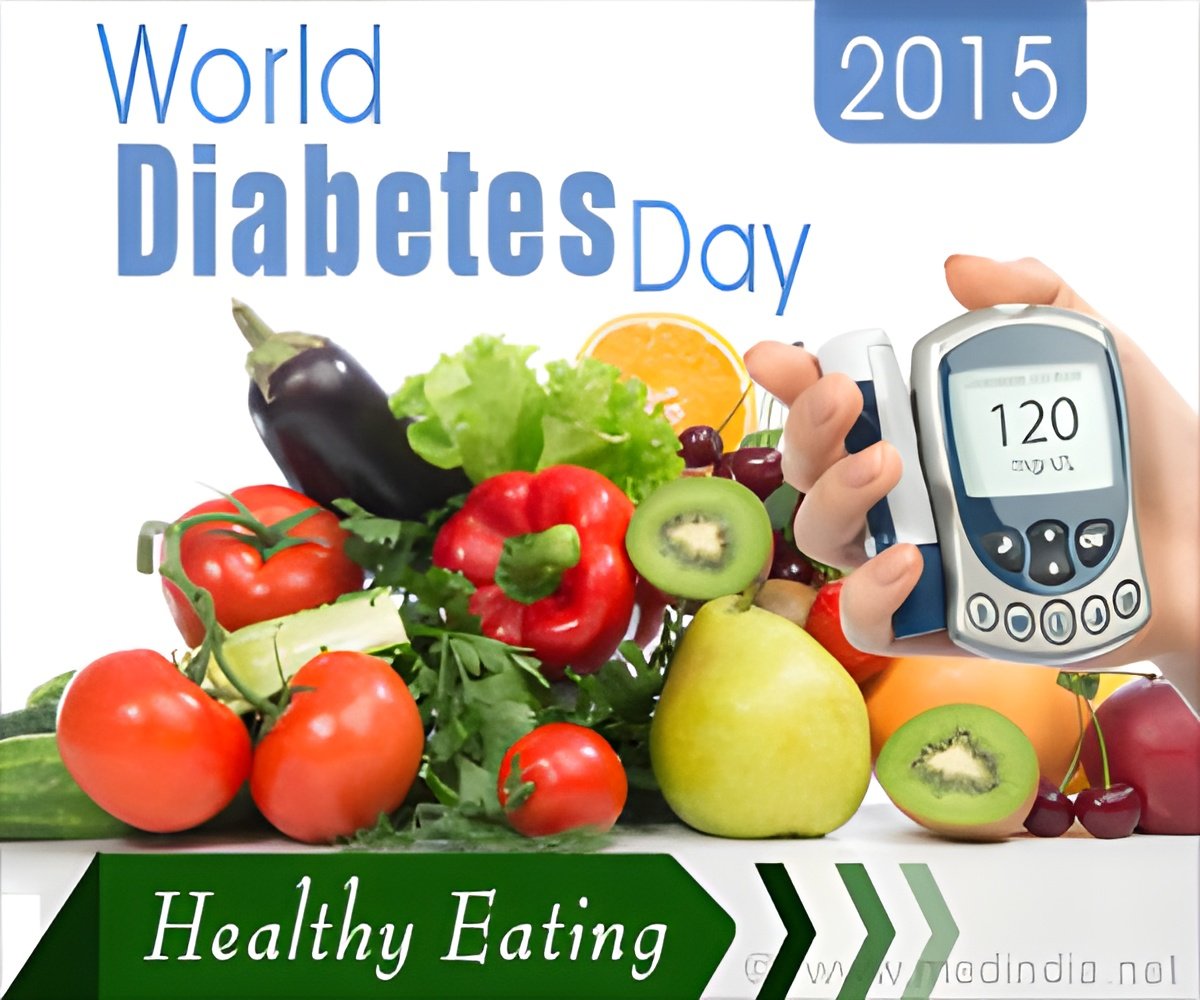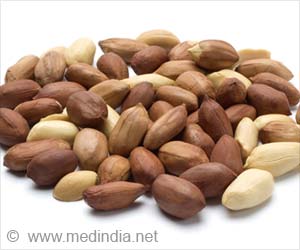November 14th is observed as World Diabetes Day. Healthy eating can help prevent the onset of type 2 diabetes.

About Diabetes
Diabetes is a chronic metabolic disorder of multiple etiology distinguished by chronic hyperglycemia with disturbances in carbohydrate, fat and protein metabolism, which results from insulin secretion deficiency, insulin action or both. It is of two types, namely type 1 and type 2. In type 1, not enough amount of insulin is produced by the body, whereas in type 2, the body's cell don't respond to insulin properly. People with diabetes have greater risk of developing number of serious health problems leading to complications such as damage to: eyes (retinopathy), kidneys (nephropathy) and nerves (neuropathy) and foot disorders leading to severe infections and eventually amputation. Serious complications include cardiovascular diseases such as heart attacks, strokes and insufficiency in blood flow to legs. The risk factors for diabetes are family history, ethnicity, overweight, unhealthy diet, physical inactivity, elevated blood pressure, impaired glucose tolerance, gestational diabetes history, poor nutrition in pregnancy.Signs and symptoms vary in people. In some cases no signs are even observed. Commonly experienced signs include: frequent urination, increased hunger, loss of weight, feeling tired, lack of concentration and interest, blurred vision, slow wound healing, vomiting and stomach pain (mistaken as flu).
Fast Facts About Diabetes
According to International Diabetes Federation, globally, 387 million people live with diabetes and 46.3% remain undiagnosed. One out of 12 people have diabetes. In South East Asia alone, there are 75 million people living with diabetes. 77% of people live with diabetes in low and middle income countries.As per WHO, the global prevalence of diabetes in 2014 was estimated to be 9% among adults aged 18 years or older. In 2012, approximately 1.5 million deaths occurred because of diabetes and more than 80% of diabetes deaths occurs in low and middle income countries. It is projected that diabetes would be the 7th leading cause of death by 2030. In India, more than 65.1 million people currently are affected with diabetes as compared to 50.8 million in 2010.
Healthy Eating for Diabetes
Eating well to maintain a healthy weight is one of the most important things that can be done for lowering risk of type 2 diabetes. For people with diabetes, a well-balanced meal plan is required. Diabetes meal plan serves as a guide on how much and what kinds of food can be chosen to eat at meals and snack times. The right meal plan helps in improving blood glucose, blood pressure and cholesterol numbers and keep weight on track.Tips for Healthy Eating
1. Eating regular meals: Avoid skipping meals and space out breakfast, lunch and evening meal over the day. This will help to control appetite and blood glucose levels, if on twice daily dose of insulin. If you work for long hours, take healthy packed lunch and healthy snacks along.2. Add carbohydrates: Include carbohydrates that are easily absorbed (with low glycemic index), such as fruit and vegetables, pulses, wholegrain starchy foods and some dairy foods. Depending on the diabetes treatment and nutritional goals, you may be advised on:
- Estimating amount of carbohydrates you are eating
- Choose healthier sources
- Spread out the intake throughout the day
- Use skimmed or semi-skimmed milk
- Look out for creamy sauces and dressings and exchange them for tomato based sauces.
- Lower intake of cheese, butter and other spreads
- Grill, steam or bake food rather than frying
5. Take more pulses: Beans, peas and lentils have low fat and high fiber, cheap to buy and are packed with nutrients. Also, they help in controlling cholesterol and have no big impact on blood glucose.
7. Cut down sugar: Reduce sugar intake in your diet without stopping it completely.
- Choosing sugar free diet or no added sugar drinks
- Buying canned fruit in juice and not in syrup
- Cutting out sugar in tea or coffee
- Reading food labels and lowering intake of high sugar foods
- Using sweeteners instead of sugar
9. Drink moderately: Alcohol is high in calories, so think of cutting down your intake, if you are trying to lose weight.
10. Keep portion size in account: Eating not what's on your plate, but eating how much is important. Know your overall portion sizes and if you are losing weight, portion adjustment would be required. Vegetables or salad should occupy half-filled portion of the plate, with rest of the plate divided between foods rich in protein, such as meat, fish, eggs or beans and starchy carbohydrate foods.
11. Refrain from diabetic foods: Foods rich in calories and fats can affect your blood glucose levels, are also expensive and can have a laxative effect.
12. Consult a dietitian: Visit a registered dietitian for a diagnosis and have regular reviews. Ask your doctor to recommend a registered dietitian and this can also be made available if you have been told that you are at risk of type 2 diabetes.
Conclusion
Diabetes is silent killer disease and affects your overall well-being. However, you don't need to be intimidated and take a backseat. There are certain lifestyle changes that can be adopted to get things back on track and one of them is eating healthy. So on this World Diabetes Day, let us all take an oath to tackle the menace caused by diabetes and live long and healthy lives.References:
1. IDF Diabetes Atlas. Updated 2014. Accessed Aug 17 2015, Available from:https://www.idf.org/sites/default/files/Atlas-poster-2014_EN.pdf
2. Global status report on noncommunicable diseases 2014. Geneva, World Health Organization, 2012.
3. World Health Organization. Global Health Estimates: Deaths by Cause, Age, Sex and Country, 2000-2012. Geneva, WHO, 2014.
4. International Diabetes Federation Diabetes Atlas, 6th edition 2013.
5. Global data on visual impairments 2010. Geneva, World Health Organization, 2012.
6. Global status report on noncommunicable diseases 2010. Geneva, World Health Organization, 2011
7. Roglic G, Unwin N, Bennett PH, Mathers C, Tuomilehto J, Nag S et al. The burden of mortality attributable to diabetes: realistic estimates for the year 2000. Diabetes Care, 2005, 28(9):2130–2135.
8. About diabetes. International Diabetes Federation. Available from: http://www.idf.org/
9. Top tips for healthy eating. Diabetes UK. Available from:
https://www.diabetes.org.uk/Guide-to-diabetes/Managing-your-diabetes/Healthy-eating/Top-tips/
Source-Medindia















